
When it comes to hiring, many software development agencies struggle with ways to ensure that the new employees fit in with the rest of the team.
While technical skills are undoubtedly important, they aren’t the only thing that matters.
There are many other qualifications that make someone a good candidate for a role, such as communication skills, drive, and problem-solving abilities.
These factors—along with experience, education, or past achievements—can all play a significant role in helping you find candidates who are more likely to succeed at your company.
In this article, we’ll walk through some of the most effective ways to find great developers who will fit into your organization’s unique culture.
Let’s start!
Table of Contents
Define your culture first
Before you start hiring your future developers, make sure you have a clear idea of what your company’s culture is.
And to achieve that, you should first and foremost define your company’s mission and core values.
This will help you create a strong corporate identity and set the tone for further recruitment.
Let’s see how Smartly managed to do it to draw some inspiration.
As the company has grown from its early days as a startup to its current state as a fast-growing software development company, the founders have adopted an approach to culture that can serve as an example to others in the tech industry.
First, they’ve created a culture handbook to help employees understand the company’s mission and values, why they matter, and how employees can live up to them.
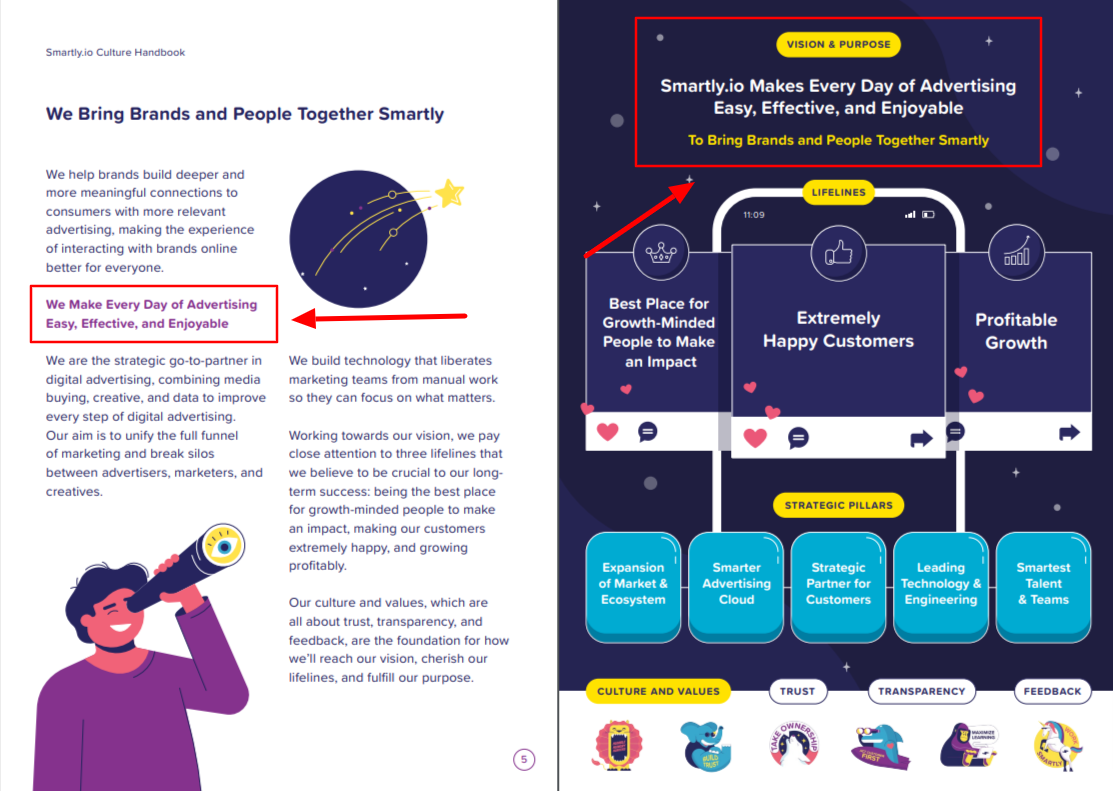
For instance, their mission statement is to “make every day of advertising easy, effective, and enjoyable.”
And by defining it, they’ve set clear expectations for how employees should work towards this goal.
After the mission, they’ve outlined their values to ensure that all employees operate under the same set of principles.
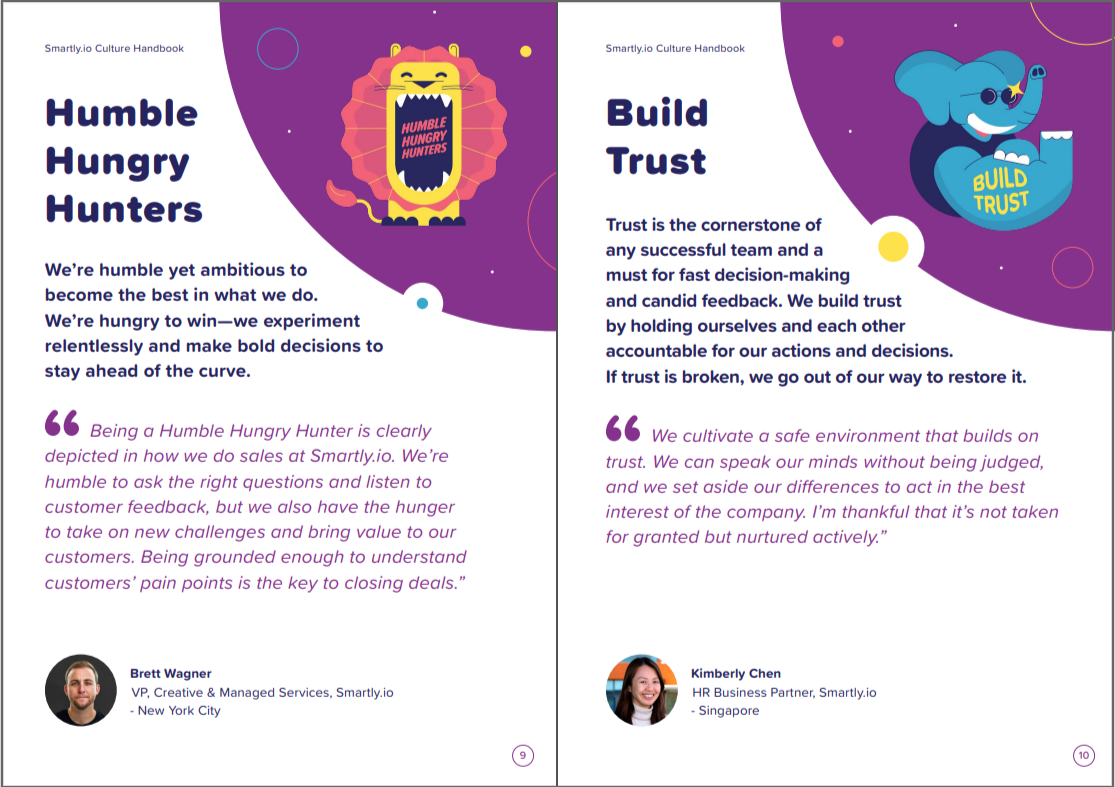
In addition to a list of values (which includes things like “humble hungry hunters” and “build trust”), they’ve also included an explanation of why these values are important and statements from current employees that showcase how everyone can implement them in their work.
But their efforts didn’t stop there–they further created six value emojis for use in internal chats.
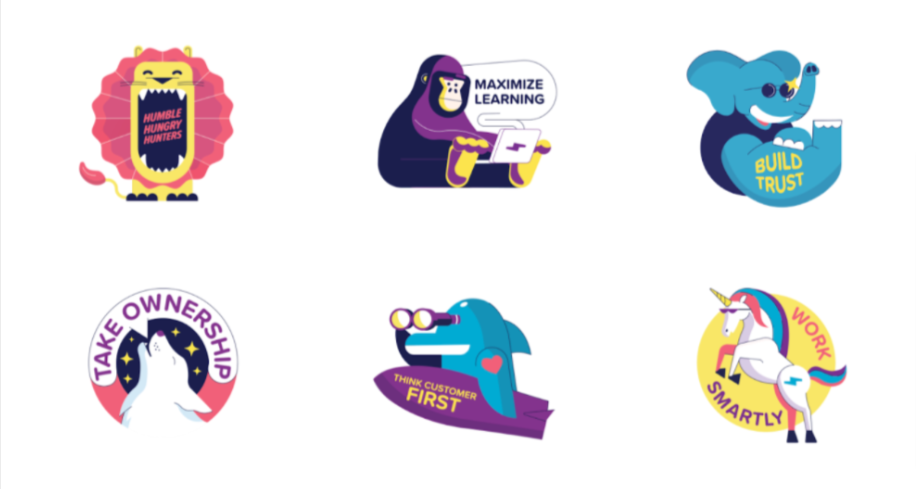
That way, they made sure that their values weren’t just empty words that are pointlessly floating in the air, but rather something that is deeply rooted in their culture and even used in internal communication.
When Smartly went public with its culture handbook and published it on its career page, it helped potential candidates to get a better idea of what it would be like to work for the company.

Get unreal data to fix real issues in your app & web.
In their own words, they constantly get feedback from their new hires, stating that it was their culture handbook that was the deciding factor that persuaded them to come work for Smartly.
By defining their company’s culture, they’ve created a better experience for both current employees and future ones and made sure that they attract the right people who fit into their organization.
And that is something worth repeating.
Invest in (re)branding
You can think of your brand as a promise that your company makes to prospective candidates.
It tells them what they can expect from working at your organization and why they should choose your software development agency over others like yours.
But how do you build up your company brand?
Use the power of content marketing and announce to the world who you are and what you do by creating blog posts.
For example, Buffer has a very resources section on its website with dozens of posts where prospective candidates can find out a lot about their truly amazing culture.
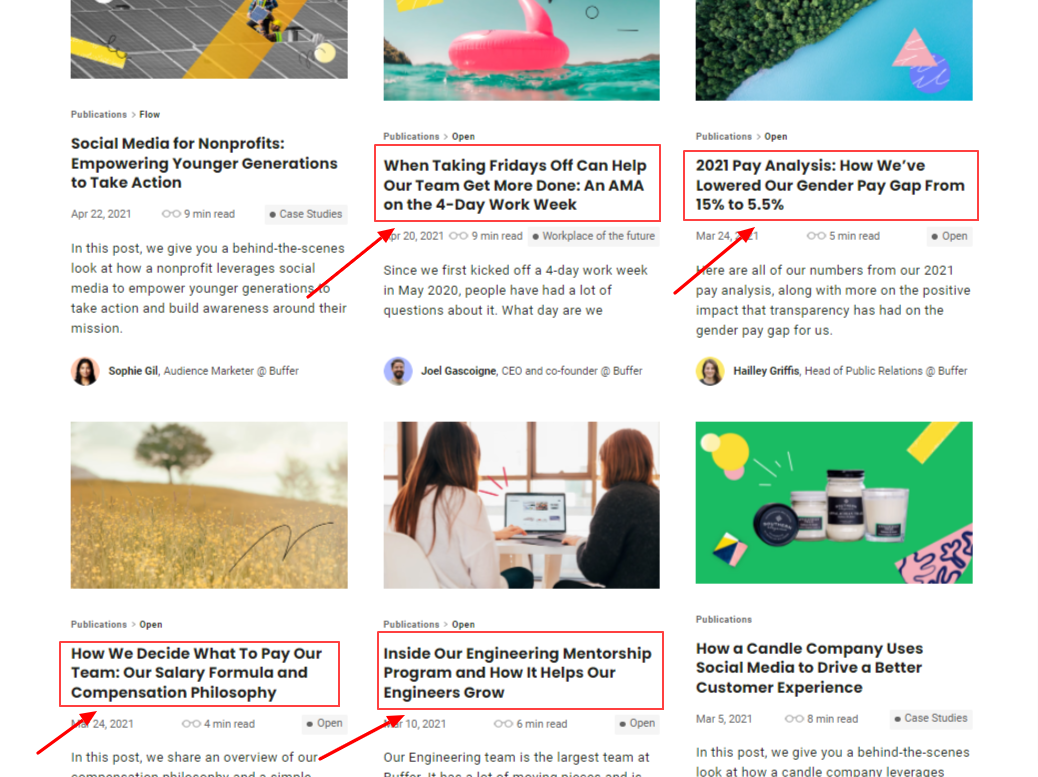
As you can see in the picture, they are very vocal and transparent about everything that goes on in the company, from lowering the pay gap to mentorship programs.
One of the benefits they write about a lot is the 4-day work week, meaning the employees get Fridays off.
That’s a great example of how you can promote one of your most differentiating advantages that will definitely attract a lot of stellar talents.
Another way to get the word out about your company’s brand is a referral program where employees get paid or get some other kind of incentive for referring someone who gets hired.
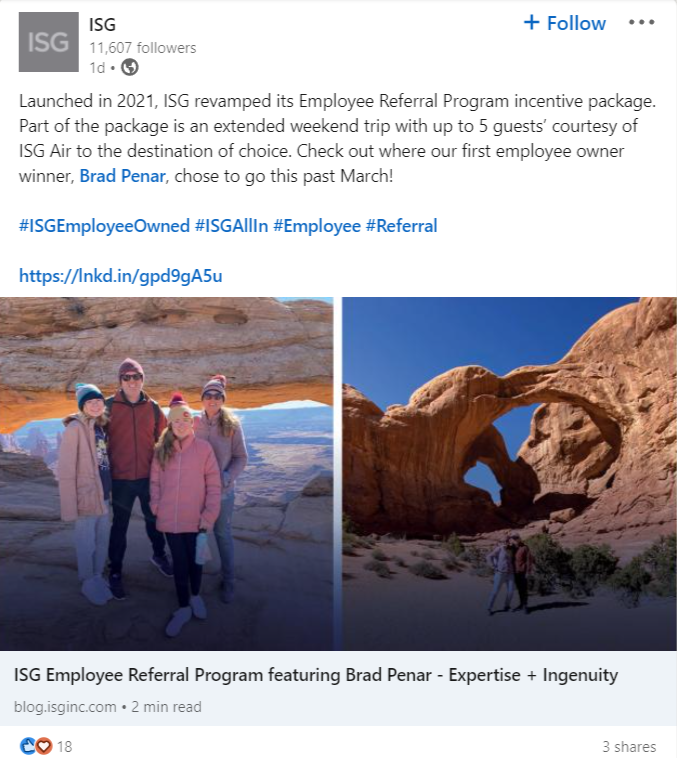
Employee referrals are a great way to show off your workplace culture through word-of-mouth, as it gives developers an opportunity to talk about what they love about working for your company.
And finally, you can take advantage of social media platforms like LinkedIn, Facebook, and Twitter to build your brand presence.
For example, Aduro, a company that offers software solutions for workplace wellness, not only has a dog-friendly office but also runs an Instagram profile dedicated specifically to the dogs there.
The account is called @dogsofaduro and features photos of dogs at the office playing with toys or just hanging out with their coworkers.

That speaks volumes about the company’s culture as it shows people outside of the company that their employees are not just focused on work all day long. They have fun too!
Remember, investing in branding is essential if you want to hire developers for culture fit.
They have a lot of prospects and can choose the company to work for, so your culture can be a key factor in their decision-making process.
And that is something that you shouldn’t overlook.
Align job descriptions with your culture
The problem with most job descriptions is that they are often vague and generic.
They don’t tell potential hires what it’s like to work at your company.
And they certainly don’t give them a sense of your culture or help them decide whether they should take an interview with you or not.
A good job description should do all these things—and more, considering the fact that job seekers care deeply about the quality of a job description.
In fact, they say it can have a substantial impact on their decision to apply for a job.
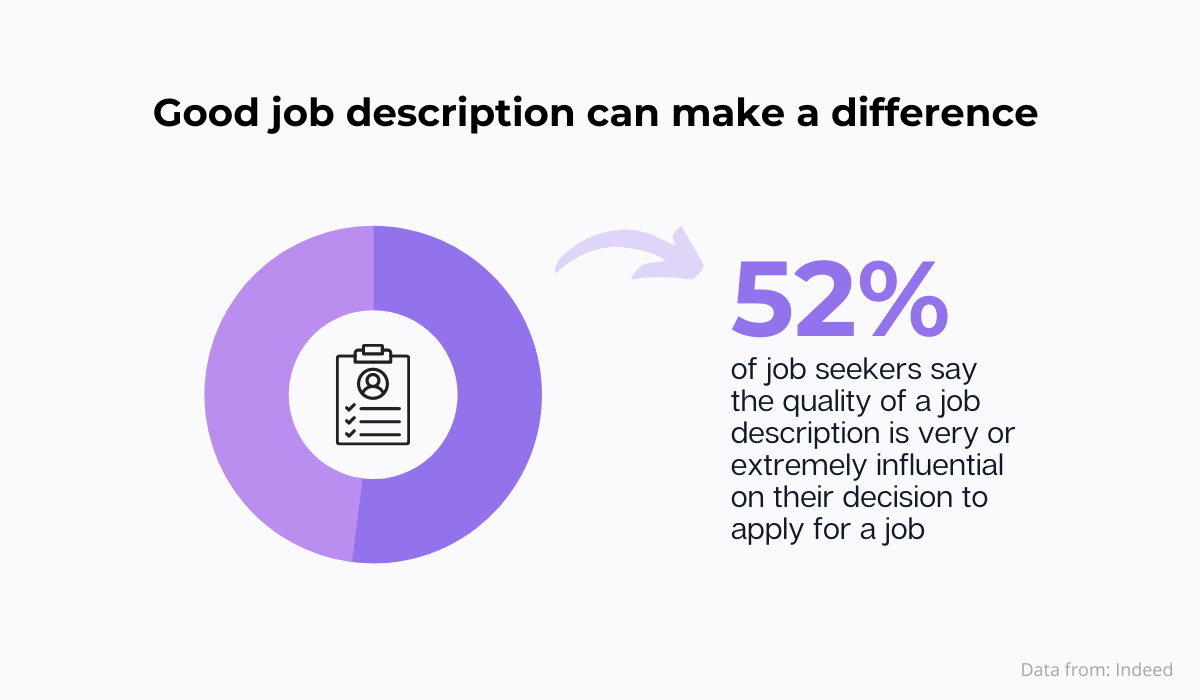
The most important part of writing a quality job description is understanding what kind of people you’re looking for and trying to target them, specifically.
The best way to do this is by talking to your existing developers.
They’ll help you understand what kind of skills, expertise, and personality traits are needed for development roles, which will help you clearly define each position in the job description.
It’s not a bad idea to ask them to review the final draft, as Olga Sanchez from GFR Services suggests, as it can be good to make sure it aligns with the company’s culture.
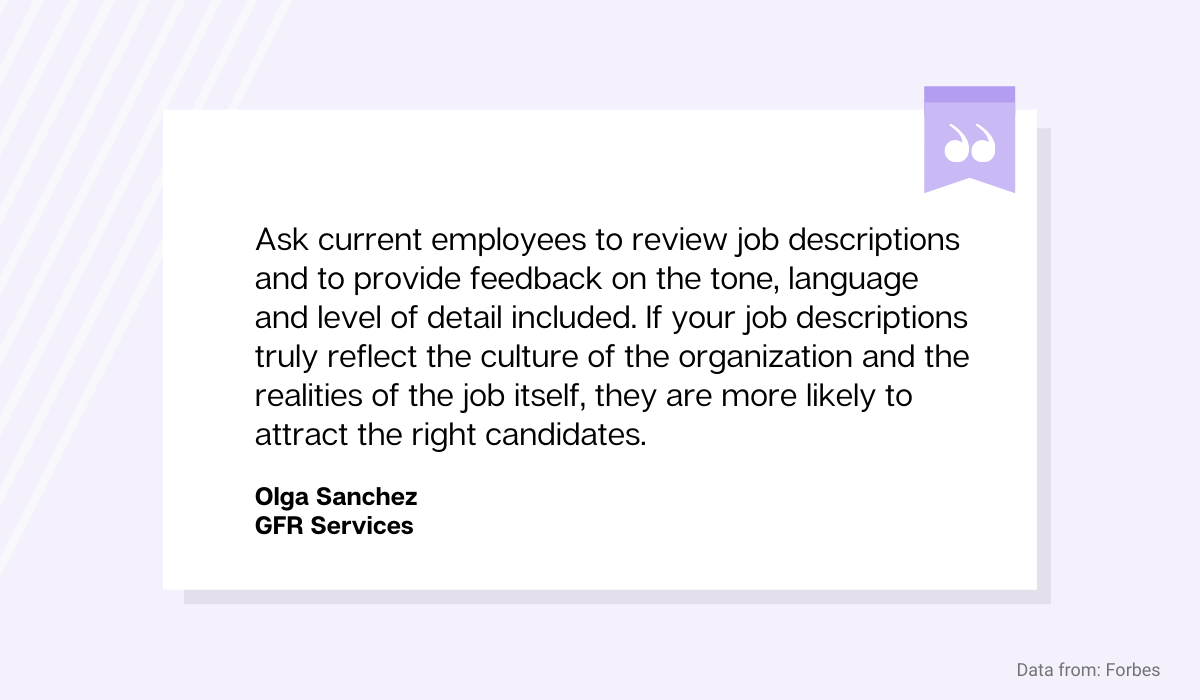
Another good practice to follow is describing your culture in job descriptions.
According to an Indeed survey, an impressive number of 72% of job seekers say they want to know more about the company’s culture when applying for positions.
That makes sense—after all, a company’s culture can be the difference between having a great experience at work and hating your job.
At Cisco, they know that very well, so they’ve made it a habit to highlight it in their job descriptions.
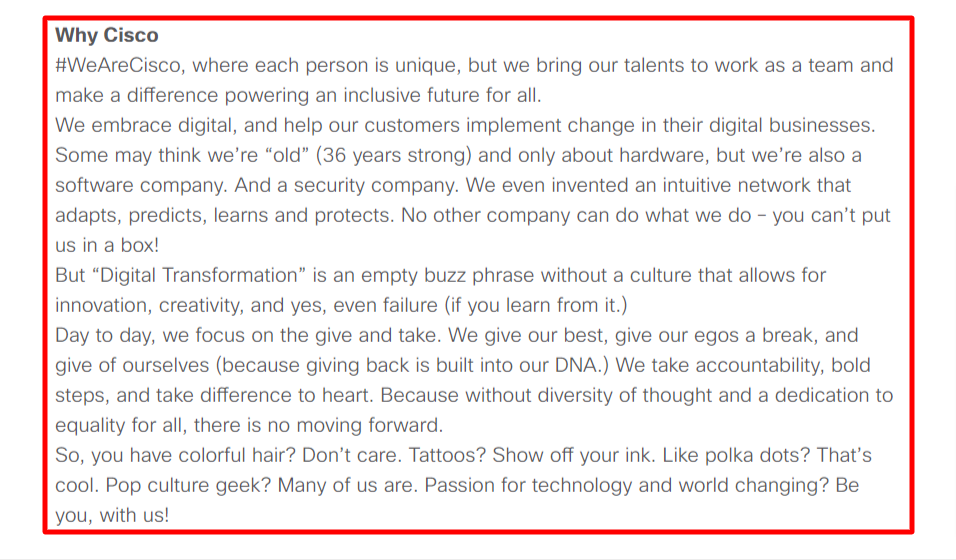
As you can see in the picture, they’ve dedicated a whole section to their culture.
And it not only says a lot about their work environment, which is all about collaboration, setting egos aside, and diversity, but also lays out what it means to be part of the team.
When writing job descriptions, you should also be careful about the words you choose—they will either highlight the culture of your company or turn off potential hires.
For example, back in the day, Buffer used to call its developers “hackers”.
After some research, they found out that the term was putting off many female developers, who were uncomfortable with the implications of that term.
Eventually, this issue initiated a decent amount of conversations company-wide, as you can see in the picture below.
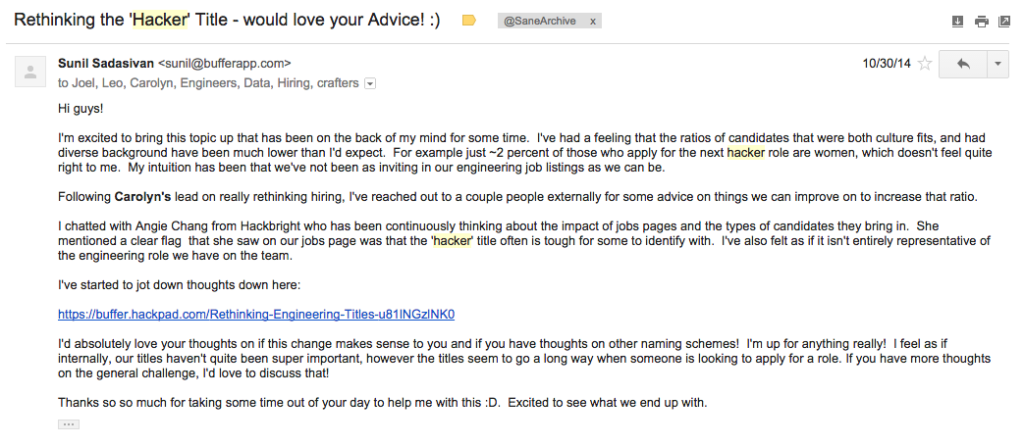
The result was that they changed their job descriptions and now developers are simply called just that—developers.
To sum up, if you want to align job descriptions with your culture, you shouldn’t make it only about the job.
It should also be about the person who’ll do it and the cultural environment in which they’ll do it.
And only then will you be able to find the right developers for your team and make sure they stay.
Embed diversity, equity, and inclusion into the hiring process
Diversity in hiring is a hot topic, and for good reason. Studies have shown that diverse teams perform better, are more innovative, and have a higher retention rate than homogenous ones.
While many companies claim they value diversity, the truth is that most fail to incorporate it into their hiring process.
And that could easily prove to be crucial for companies as many job seekers view diversity as an important factor when choosing a job.
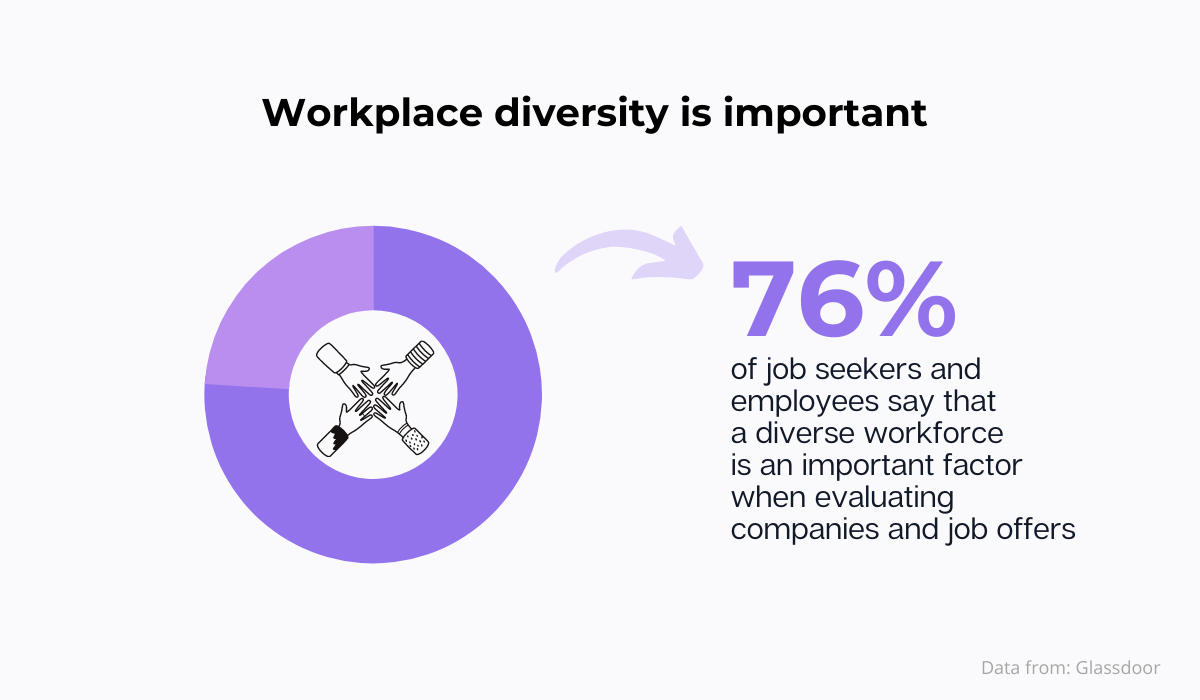
So how can you ensure your company hires people who will bring different perspectives to the table?
One way is to advertise for jobs in ways that reach developers from underrepresented groups.
For example, if you’re having trouble finding female applicants for a software development position, try advertising on sites like Women Who Code or Girls Who Code.
In the picture below, you can see Shopify’s job listings on the Women Who Code website, meaning that they are reaching out to women developers and making them aware of their open positions.
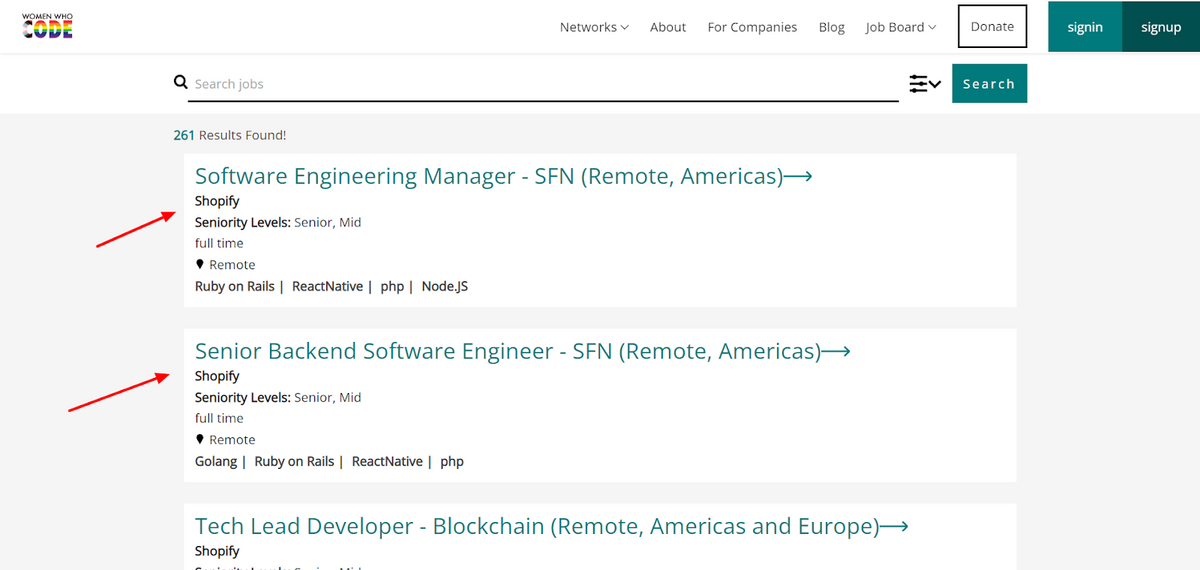
Another good way to ensure that minority candidates aren’t screened out is to automate your hiring strategy so that all parts of the application process are conducted equally, regardless of race or gender.
And if you just take a quick glance at the statistics below, you’ll see how much this can be important because we are all, whether we want to admit it or not, to a great extent, still unconsciously biased.
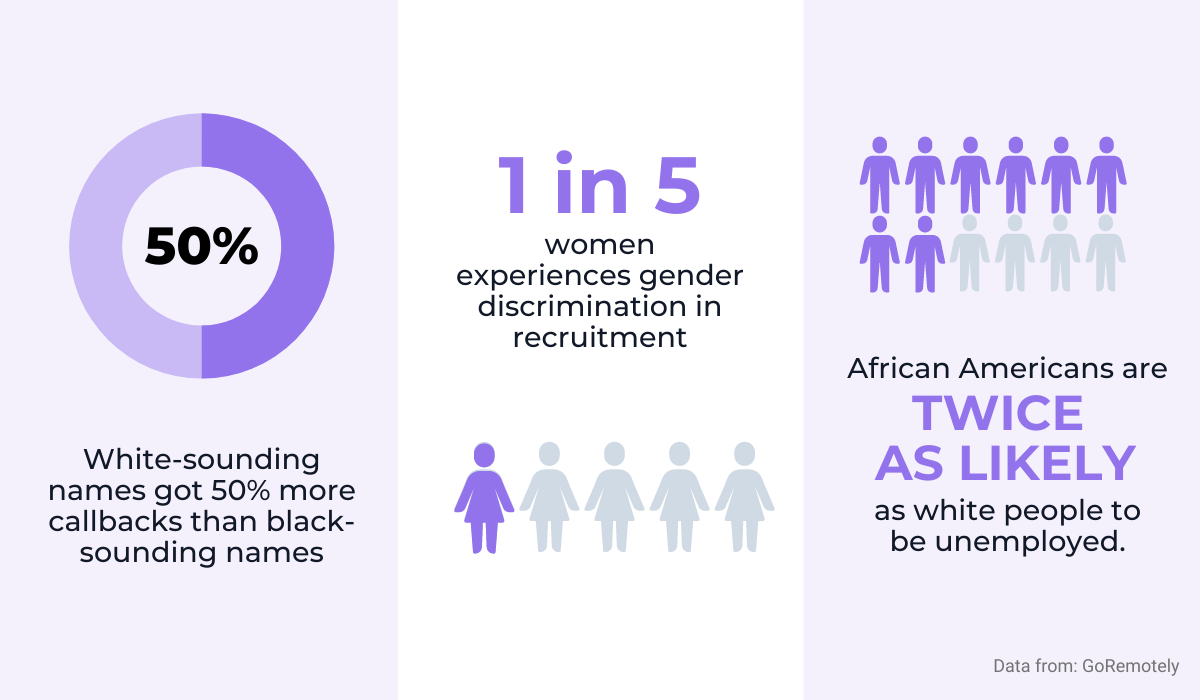
For automation, you can use tools like Toggle Hire, which can help you reduce biases at the very beginning of the hiring process.
In other words, all candidates have to take a short test based on their skills.
That can be about anything from JavaScript and React to general coding and HTML and CSS, as in the example above.
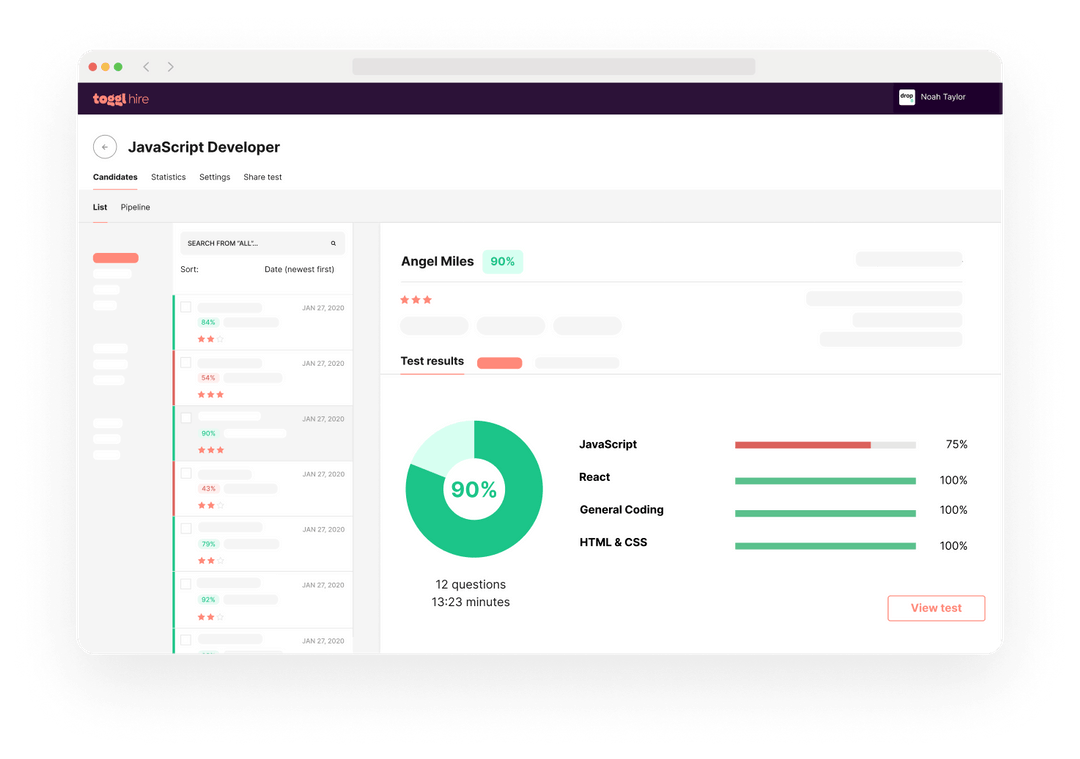
The tool then checks the answers and calculates the score, without ever taking into consideration factors such as gender, race, age, or ethnicity.
This score is then used for further screening processes with candidates.
The idea behind this is simple: by giving candidates an opportunity to showcase their knowledge, experience, and skills, you can eliminate some of the biases that often occur when looking at a resume or cover letter.
Remember, if you want to embed diversity, equity and inclusion into the hiring process, you need to make it a priority.
This means taking a proactive approach and putting processes in place that will ensure that you’re hiring people that are not just qualified for the job but also represent the diverse culture of your company.
Provide a sneak peek of your company culture in the interviews
If you want to make sure that your potential new developers get a good impression of your company’s culture, give them a glimpse of it during an interview.
For example, if you have a mentorship program in place, as Cisco does, the interview is a good place to discreetly brag about it.

In the Glassdoor review where this was mentioned, the reviewer said he was pleasantly surprised by the possibility of a mentorship program for new hires and gave the whole interview a 10/10 rating.
During the interview, you can also outline some of the company’s projects or initiatives you are proud of.
If you have anything that has been particularly successful or noteworthy, showing off some examples can help candidates understand why they should work at your company.
If your company, for instance, makes strides in giving back, either by volunteering, donating to charity, or making any other philanthropic endeavors that positively impact the community, you can accentuate it during the interview.
Cornerstone OnDemand, a cloud-based talent management software, is known for having employees who donate their time to charity work.
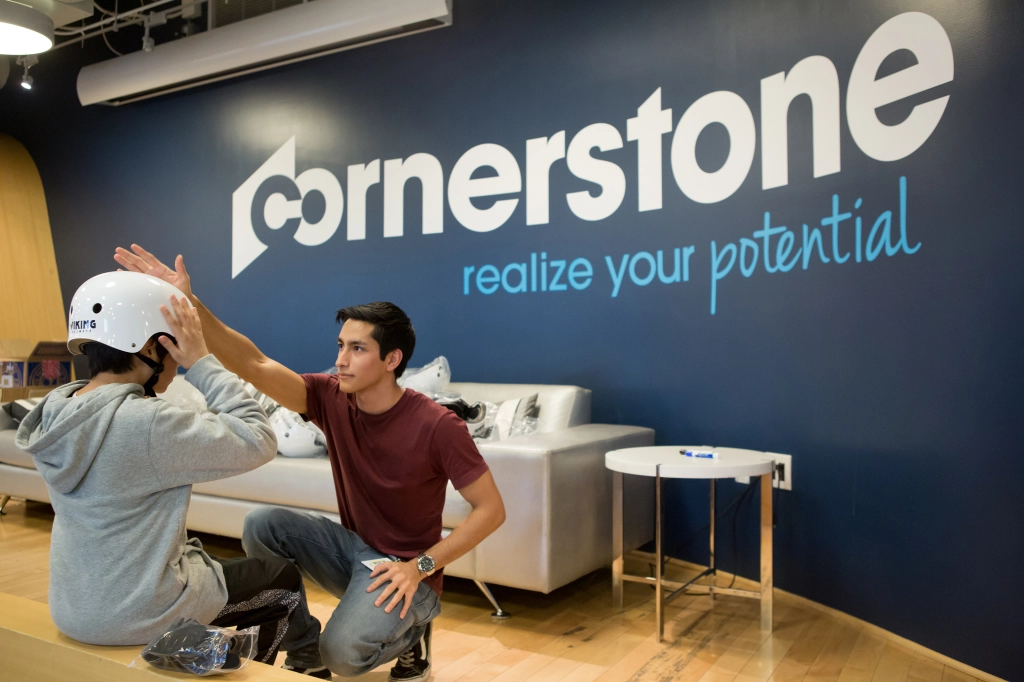
Whether it’s about child mentoring programs or participating in charity walks and marathons, the company’s culture is geared towards giving back to society and making a difference in people’s lives.
In fact, one of the employees in the Fortune article mentioned next:
“At my new-hire orientation, we spent part of one day working with a group of kids to help them create and build their own skateboards.”
And that is a pretty interesting fact to mention during an interview and the one that will definitely highlight what makes Cornerstone’s company special and unique.
These are just two examples that may or may not be relevant to your company. There is no one-size-fits-all solution and you can use as many different strategies as you want.
Just make sure that they provide your candidates with a sneak peek of your company’s culture.
That way, when you’re trying to figure out whether or not someone is right for the job, they’ll be able to make an informed decision on whether they truly want to work with you.
Craft an onboarding experience that communicates your culture
The onboarding process is the first time that new hires come into contact with your company’s culture.
It’s your chance to make a lasting impression on your new developers that will help them feel like they belong and want to stay.
In fact, according to Brandon Hall Group, companies with strong onboarding programs see an 82% increase in employee retention rates.
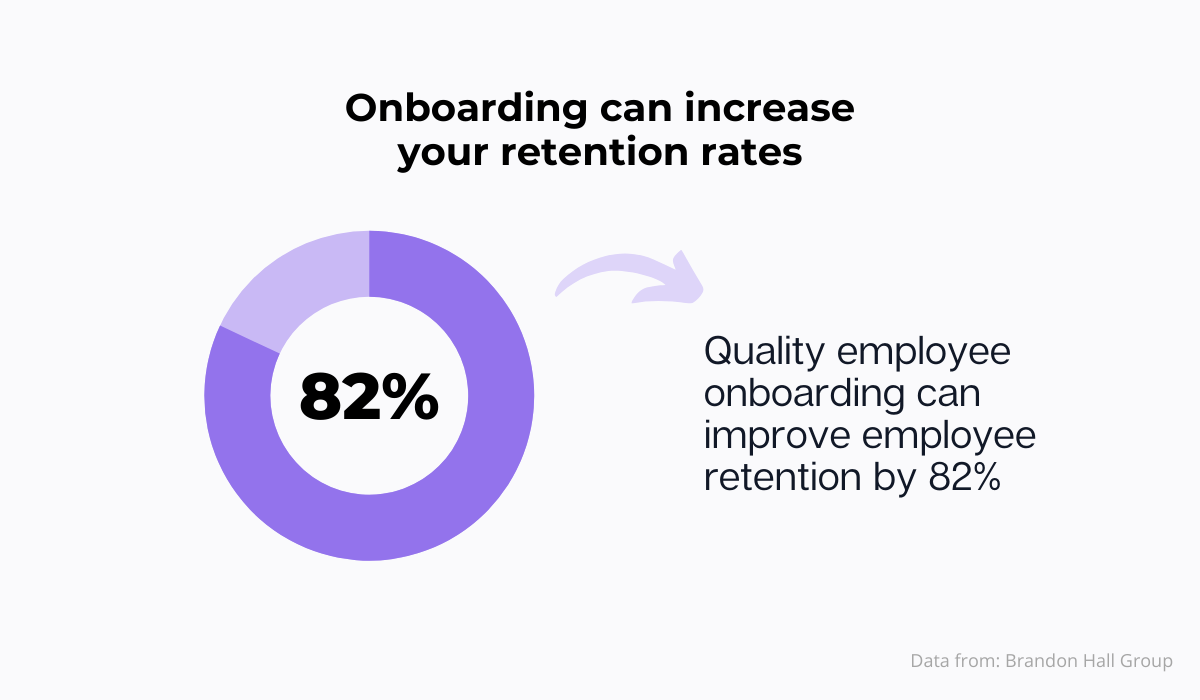
Of course, you can’t expect every new hire to immediately understand your culture. But there are ways to help them get up to speed more quickly.
For starters, you can create a welcome video that introduces them to your team and explains what makes your company special.
Atlassian offers us a pretty great example of that. In their welcome video, the employees talk about what it’s like to work remotely and give a warm welcome to all new coworkers.
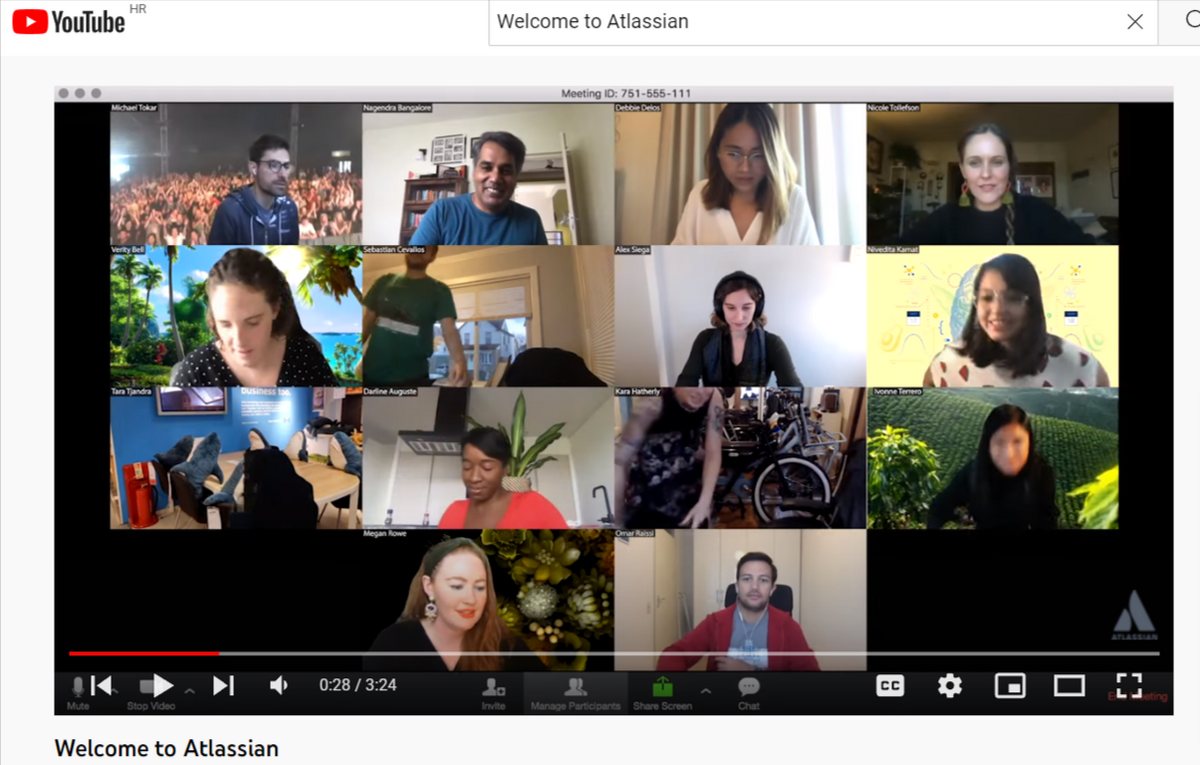
They also discuss why they love working at Atlassian and how they haven’t lost their culture even though they don’t share the same office space anymore.
With videos like this one, your new developers will be able to see how people at your company interact with each other on a daily basis—and that can make all the difference in helping them feel like they’re in the right place.
And other companies also went above and beyond when it comes to the onboarding process.
For instance, Buffer assigns new hires a culture buddy to help them get the ropes quickly.
The role of a culture buddy is to provide support in the first few weeks of joining the team.
They help with everything from understanding company culture and getting used to new office surroundings to finding out more about the company’s values and offering feedback.
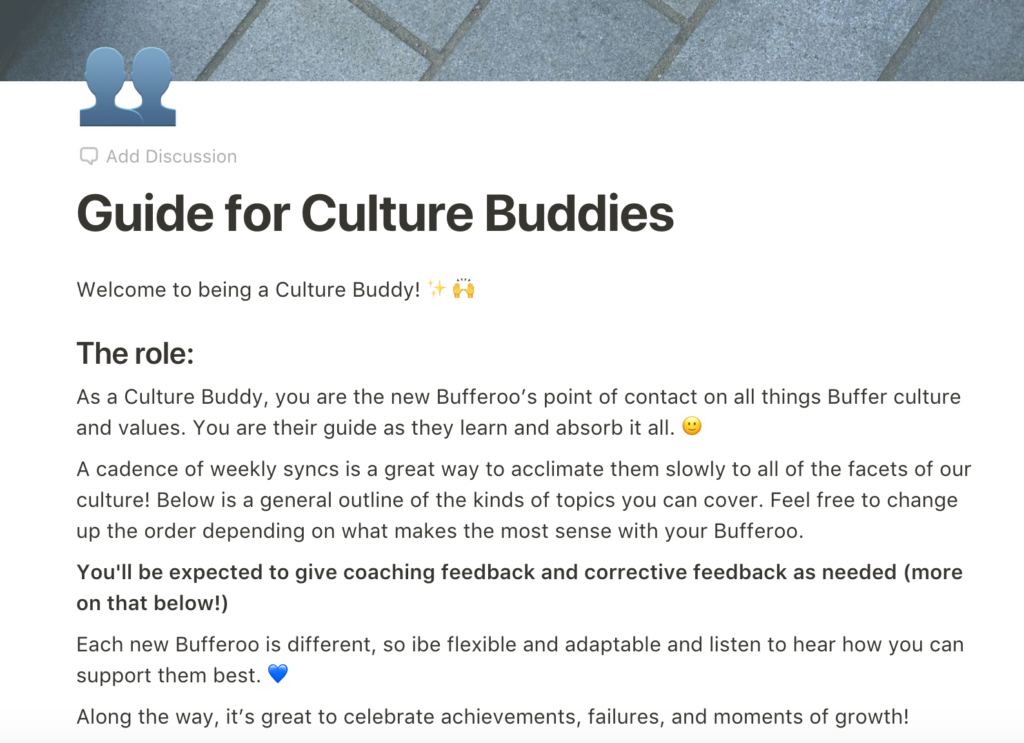
By assigning each new hire a culture buddy, Buffer managed to build a solid foundation for their new employees while also making them feel more immersed in life at the company.
All in all, onboarding is a process that helps new developers become acclimated to the company’s culture and work environment quickly so they can focus on their core responsibilities sooner than later.
This means that they’ll spend less time figuring things out and more time spent working toward achieving results for the company. Therefore, it’s worth the effort to get it right.
Conclusion
Hiring for culture fit can be tricky, but it’s important because it makes your team stronger and more cohesive.
When you have a team of people who share similar values and interests, they’re more likely to work well together as a unit. That means better results for your business.
In this article, we tried to distill the secrets of hiring for culture fit into six best practices for you to implement, and provide some examples of how companies are doing this effectively in their own hiring processes.
We hope that these tips will help you hire employees who are not only great at their jobs, but also bring value to your organization by sharing your company’s values and making it a better place to work.




